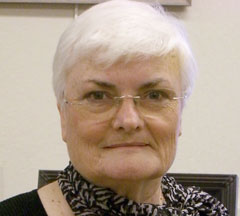
How Can We Help Our Clients Save Their Valuables After A Flood?
By Dr. Harriet Burge, EMLab P&K's Director of Aerobiology
This is an important question. Too many flood victims are told that they have to discard all
their belongings, especially if they begin to develop visible mold. In fact, many things (perhaps
most) can be recovered. Here are a few suggestions.
- Any hard ceramic, glass, plastic, or metallic surface can be washed.
This means dishes, silverware, pots and pans, and anything else made of these
materials (this includes CDs and DVDs but not VCR tapes). If the items have visible surface mold,
add 1/4 cup of bleach to the wash water along with detergent, and rinse well. Always use detergent
so that the spores will become wet and not be aerosolized.
- Clothing, linens, and carpets that can be sent out are readily cleaned providing this
is done promptly after the water recedes.
If it is at all possible, it is worth it to do this up front and bill your insurance
companies later. It is often delays in insurance settlements that lead to gross mold growth that
cannot be removed.
- Wooden furniture is readily cleaned providing, again, that this is done promptly after
water recedes.
Even if visible mold growth occurs on wood it is readily removed with a dilute
bleach/detergent solution followed by rapid drying.
- Complex things such as pianos can be saved, but a professional will probably have to
be involved.
Pianos are primarily wood and metal, which are easily cleaned. However, they also
have lots of felt in them, and this must either be dried very quickly, or will have to be
replaced. Also, any piano should be dried quickly and as gently as possible to avoid cracking
the sound board.
- Oil or acrylic paints done on a board surface (e.g., masonite) are easily cleaned by
wiping with a damp cloth.
Painting done on canvas with oil or acrylic also can be cleaned, although if mold
appears on the exposed canvas a professional may have to be involved. Painting on paper (e.g.,
watercolors, drawings, pastels) are difficult to recover and, as for books, the attempt should
be made only if the object is especially valuable.
- Mattresses, box springs, and upholstered furniture usually cannot be cleaned.
Mattresses and box springs should be replaced. Upholstered furniture with solid,
well-made frames can usually be re-upholstered at a cost considerably less that purchasing new
furniture of equal quality.
- Only the most valuable books are worth saving.
In order to rescue soaked books, one must use the services of an expert. These
experts usually freeze/dry the books and then carefully clean each page.
- Electronic equipment may or may not be salvageable.
I am not an electrician and am not qualified to comment on this subject.
Hopefully these examples will provide information that can be applied to other specific items
that I haven't mentioned. Major floods are devastating experiences, and it is often difficult
to imagine that things will ever be back to normal. With your advice and help, this can be a
less difficult time for your clients.
This article originally appeared in the July 2010 issue of Indoor Environment Connections.
Reprinted by permission.
 |
|
About Dr. Harriet Burge
Dr. Harriet Burge is EMlab P&K's Director of Aerobiology and Chair of EMLab P&K's
Scientific Advisory Board. Widely considered the leading expert in indoor air quality (IAQ),
Dr. Burge pioneered the field more than 30 years ago. She has served as a member of three
National Academy of Sciences committees for IAQ, including as Vice-Chair of the Committee
on the Health Effects of Indoor Allergens. View Dr. Burge's Curriculum Vitae.
Read "Ask Dr. Burge" articles
|
|
|
The data and other information contained in this newsletter are provided for informational
purposes only and should not be relied upon for any other purpose. EMLab P&K hereby
disclaims any liability for any and all direct, indirect, punitive, incidental, special or
consequential damages arising out of the use or interpretation of the data or other information
contained in, or any actions taken or omitted in reliance upon, this newsletter. Images
included in this newsletter are property of EMLab P&K, unless otherwise specified.
|
 |
|